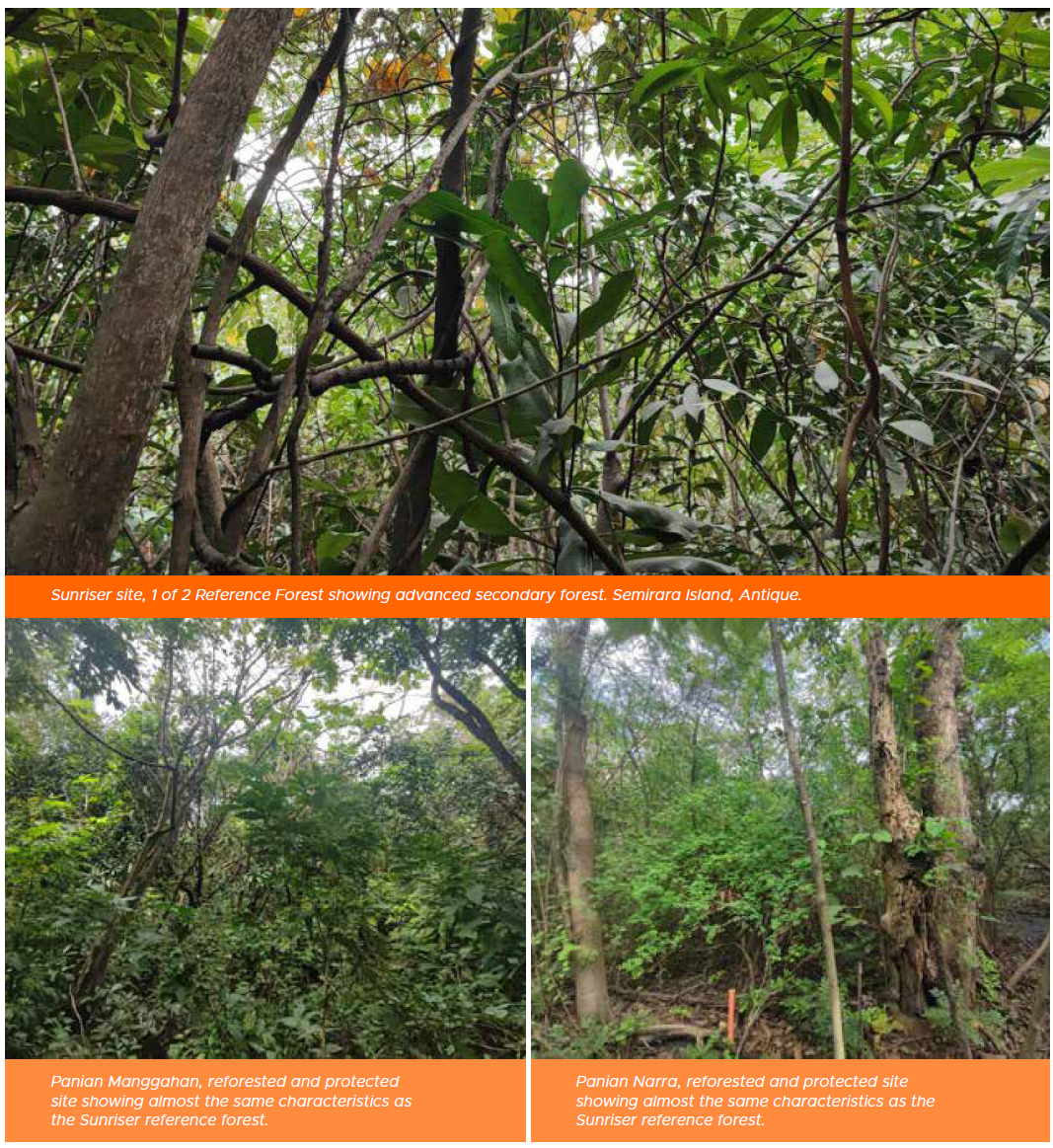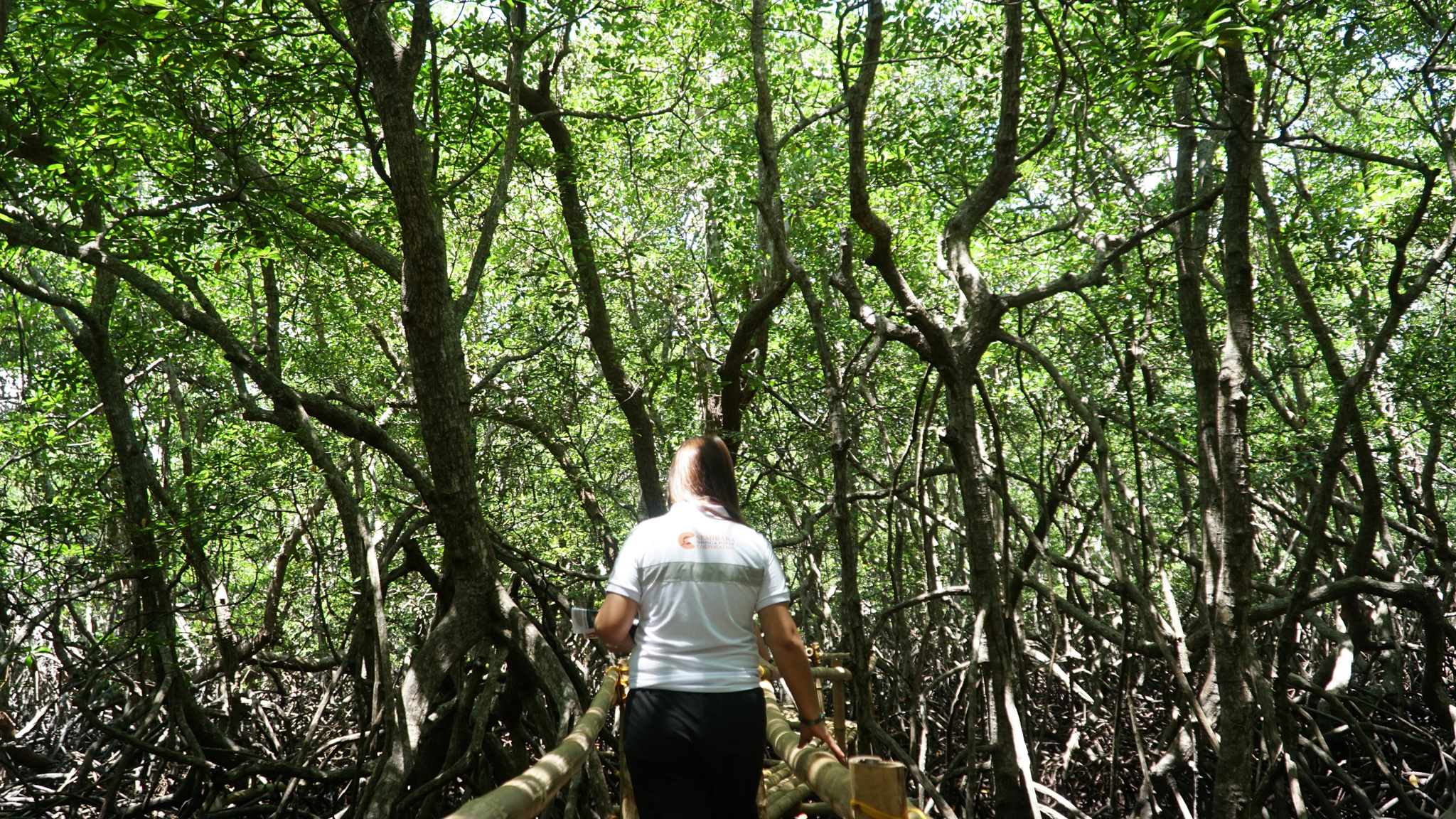Reforestation, afforestation, revegetation, and restoration are our key sustainability programs for areas disrupted by mining activities.
Our programs include planting mangroves for carbon sequestration and coastal community protection. We also protect and enrich mangrove areas outside our mining sites on the island.
Our reforestation and afforestation projects extend beyond our operating sites. We collaborate with environmental experts, communities, and local government units to constantly improve our strategic approach to environmental sustainability.

Floral Biodiversity and Land Function Analysis
We also monitor the terrestrial ecology at affected sites to assess the potential impacts of our activities on biodiversity and ecosystems. These assessments help us monitor whether our environmental stewardship efforts and initiatives are effective.
In 2022, we engaged a third party expert, the University of the Philippines Los Banos Foundation Inc. (UPLBFI) to remeasure the effectiveness of our interventions for improving the landscape function analysis (LFA) and floral diversity at our restoration sites since the 2019 assessment. The study also included the estimation of carbon potential as part of our holistic nature-based solution approach on environmental sustainability.
More species have been identified in the floral biodiversity assessment. The study observed 752 species, which was a 3.6% increase from the 726 species recorded in 2019. Our continued interventions for landscape rehabilitation and protection are geared towards meeting the target functionality represented by onsite reference forests.
Sunriser is a secondary growth forest in Semirara Island, which has begun to thrive as a suitable landscape. It now exhibits similar features to that of an old-growth natural forest with healthy amounts of carbon stock.

Advancing Carbon Sequestration
The UPLBFI study also measured the current carbon stock potential within the 550 hectares of forests and mangroves planted and protected in Semirara Island.
The study of selected sampling sites indicated an overall carbon stocking of about 968 kilotons of carbon dioxide equivalent (ktCO2e), with the highest sequestration from the mangroves. This shows a 10.8% increase from the 2019 study. Surviving mangroves in Semirara Island showed the highest carbon stock, with more than 837 tons of carbon per hectare (tC/Ha), a value that is greater than other known documented carbon stock assessments in the Philippines to date (Gevaña, et. al, 2018*).
Mangroves are powerful carbon sinks because they capture carbon dioxide and store these in their roots and branches. Mangrove forests store an estimated 3-5 times more CO2 per hectare than tropical forests, making these coastal forests extremely valuable to climate change mitigation. Mangroves act as important habitats for fish, shellfish, and other marine organisms, thereby sustaining marine resources that our community fisherfolks depend on for livelihood. They also stabilize shorelines and protect coastal communities from storm surges and extreme weather events
Back
Back
Back
Back
Back






